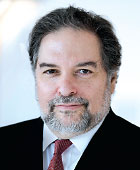Psychedelic Medicine: Careful Studies, Regulations Are the Answer
Abstract

Paul Summergrad, M.D., is the Dr. Frances S. Arkin Professor and Chair of the Department of Psychiatry and a professor of medicine at Tufts University School of Medicine. He is also psychiatrist-in-chief at Tufts Medical Center and a past APA president. He serves on the scientific advisory boards of Alkermes, Compass Pathways LTD, and Pear Therapeutics and is a consultant to Mental Health Data Services Inc., Pear Therapeutics, and Compass Pathways LTD.
Stanley Caroff, M.D., raises important points about the risks and challenges in psychiatric research as we look for new treatments for many disabling, or otherwise imperfectly treated, disorders. As has been well described previously, investment by the pharmaceutical industry in new compounds to treat neuroscience disorders—particularly those in psychiatry—has been limited in recent years. Despite major investment in genetic, basic neuroscience, and neuroimaging research, the development of specific targets for pharmaceutical intervention has been slow in coming. The challenges of patients who remain ill despite our best efforts, especially in an environment where new agents are limited, has prompted investigators to look at repurposing existing medications, such as ketamine, MDMA, and psilocybin, as well as drugs from other areas of medicine, such as minocycline.
As Dr. Caroff correctly notes, many of these latter compounds have been tested only in small patient series, are difficult to blind, and have been studied by groups led by highly committed investigators, rather than in larger and more typical populations. Additionally, many of these agents have a complex history of nonmedical, recreational, or illegal use, which has led to several of them being restricted to Schedule 1. All of these considerations should be kept in mind as new studies are reported. (See my paper, “Psilocybin in End of Life Care: Implications for Research,” which was published November 30, 2016, in the Journal of Psychopharmacology.)
Large-scale trials with careful oversight, risk-modification strategies to prevent drug diversion or allow safe administration—such as have been recently occurred with approvals of esketamine and brexanolone—and careful attention by psychiatrists and others to potential benefits and risks of any new compound may be effective strategies to counter these risks.
Because mental disorders have been so disabling and difficult to treat, the history of psychiatry is replete with enthusiasms that have not always, in the fullness of time, proved valuable. Careful studies, appropriate regulatory processes, and the exercise of skilled clinical judgment can all be helpful and protective. However, there may be much we can potentially learn about the organization of mental functioning while affected by compounds that can have a profound effect on sense of self and other. ■
See related article “Psychedelic Medicine: Much More Study Needed.”



